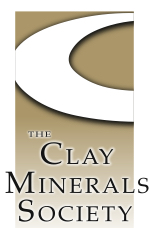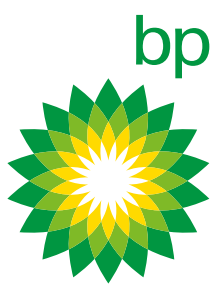Enhancing Oil Recovery
MD Simulations of Low-Salinity Enhanced Oil Recovery
Tom Underwood, Valentina Erastova, H. Chris Greenwell
thomasunderwood.github.io
CMS 2016

This Presentation
A brief introduction to...
- Low-salinity enhanced oil recovery.
- The role of clay minerals.
- Some cool results.
- Some conclusions and questions.
Global Energy Demand
By the year 2035 it is predicted that worldwide energy consumption will have increased by approximately 35%.

Current oil extraction methods only recover approximately a third of the oil within a reservoir.
Optimising oil extraction rates is a big problem!
A Possible Solution...
Enhanced oil recovery (EOR) is a technique used to improve the oil output from a reservoir.

Using a flooding fluid with lower salinity (compared to seawater) has been shown to improve oil extraction rates, hence low-salinity EOR.
How we think it works...

How we think it works...
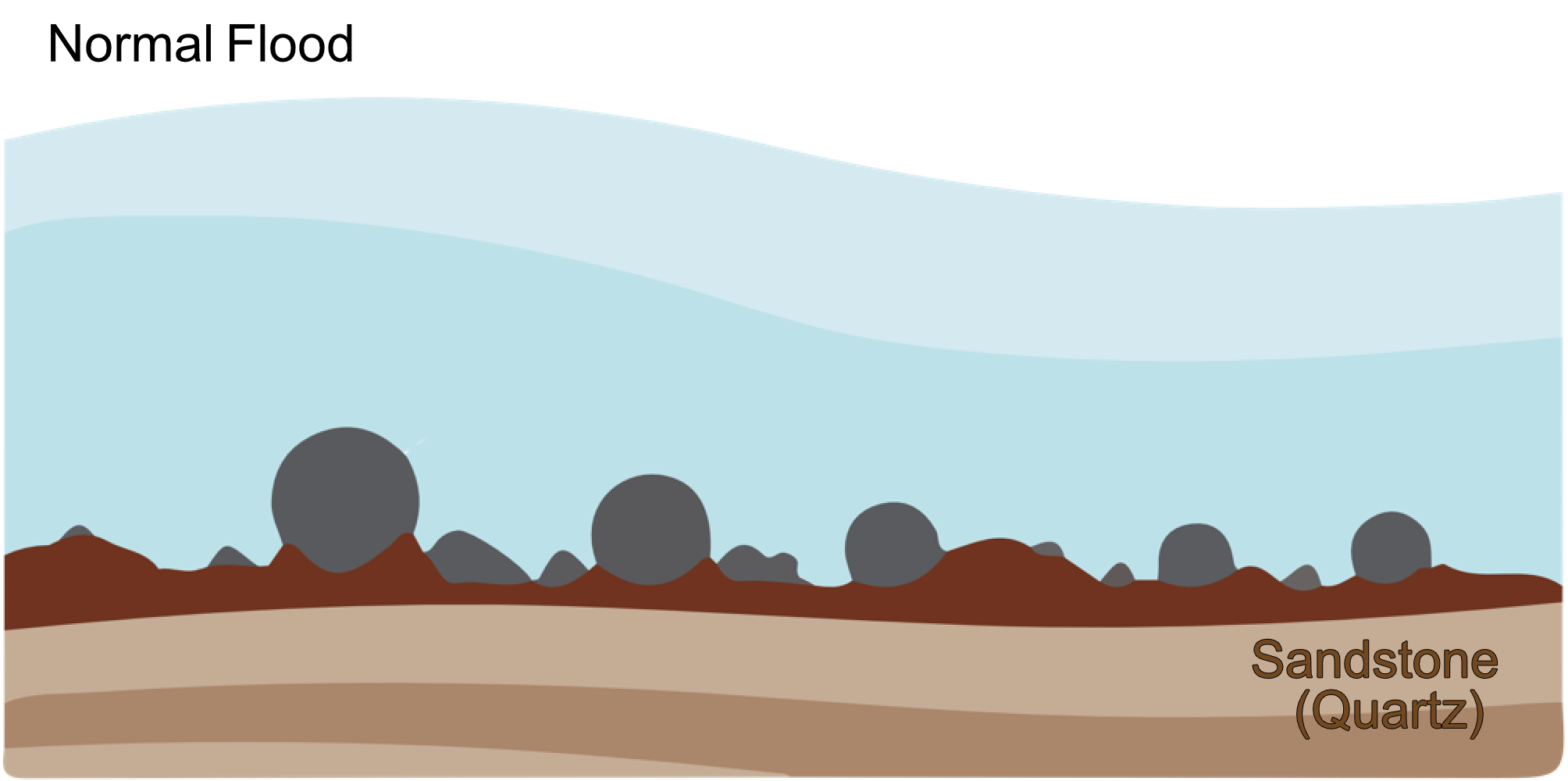
How we think it works...
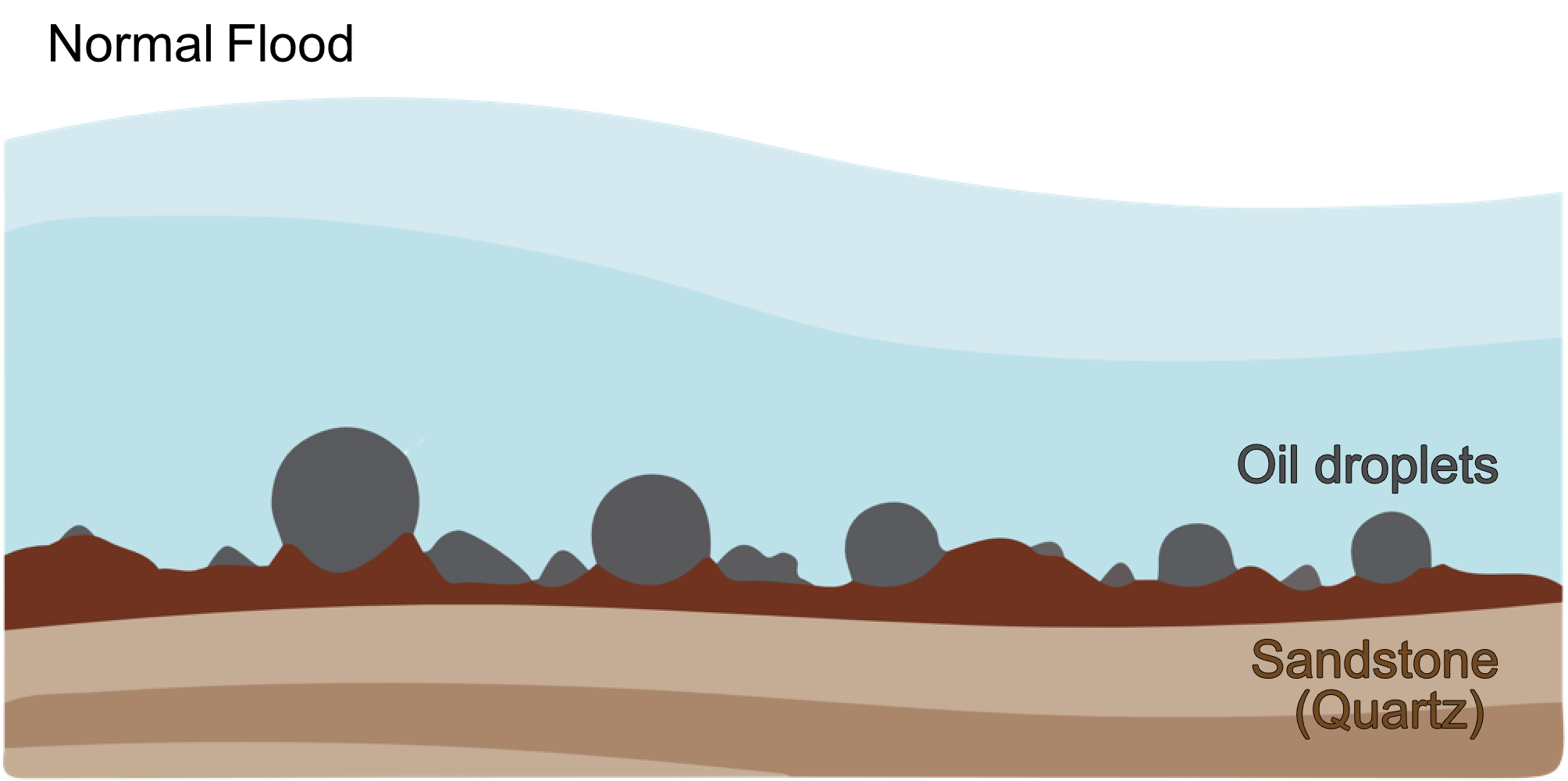
How we think it works...
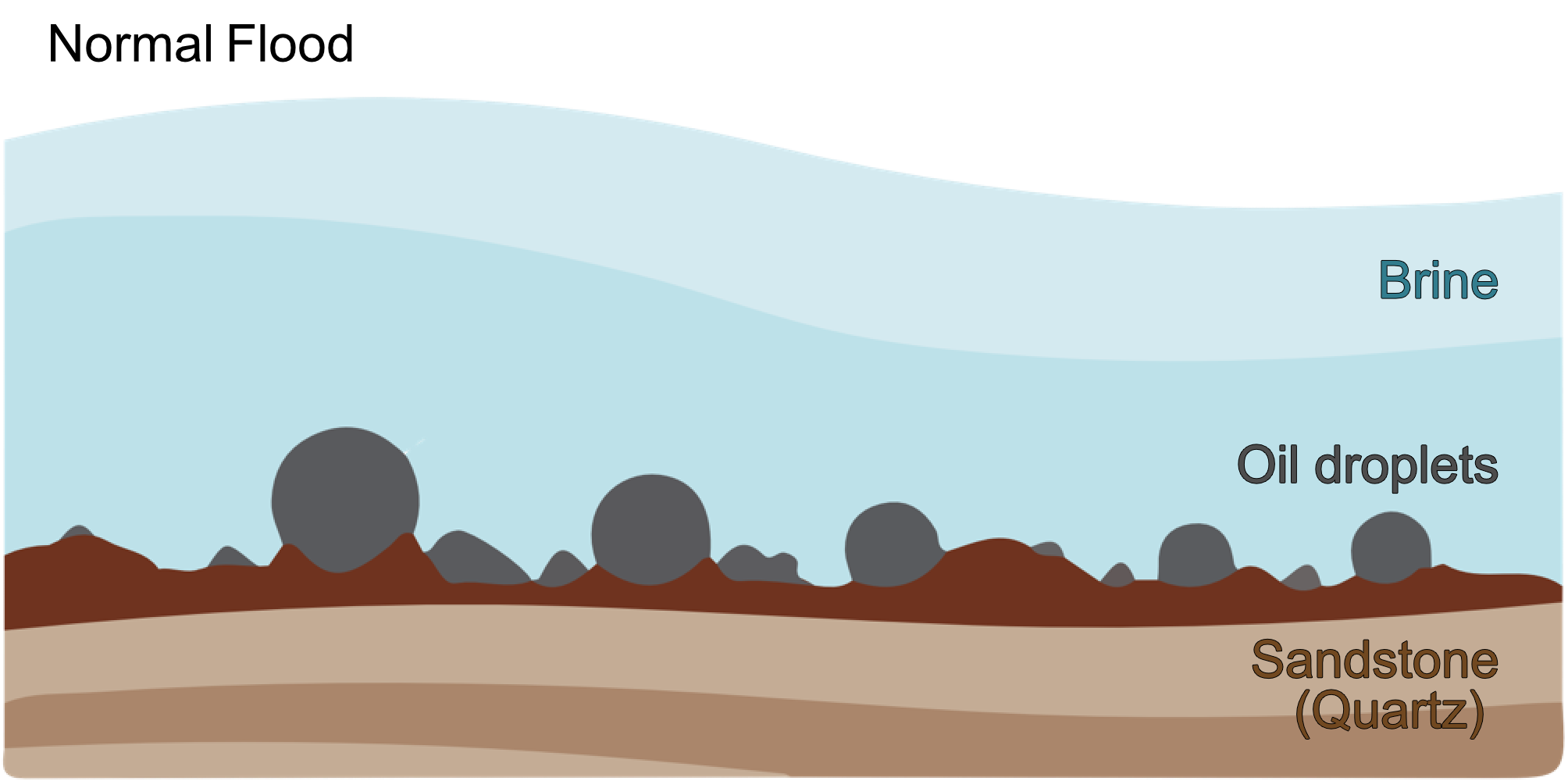
How we think it works...
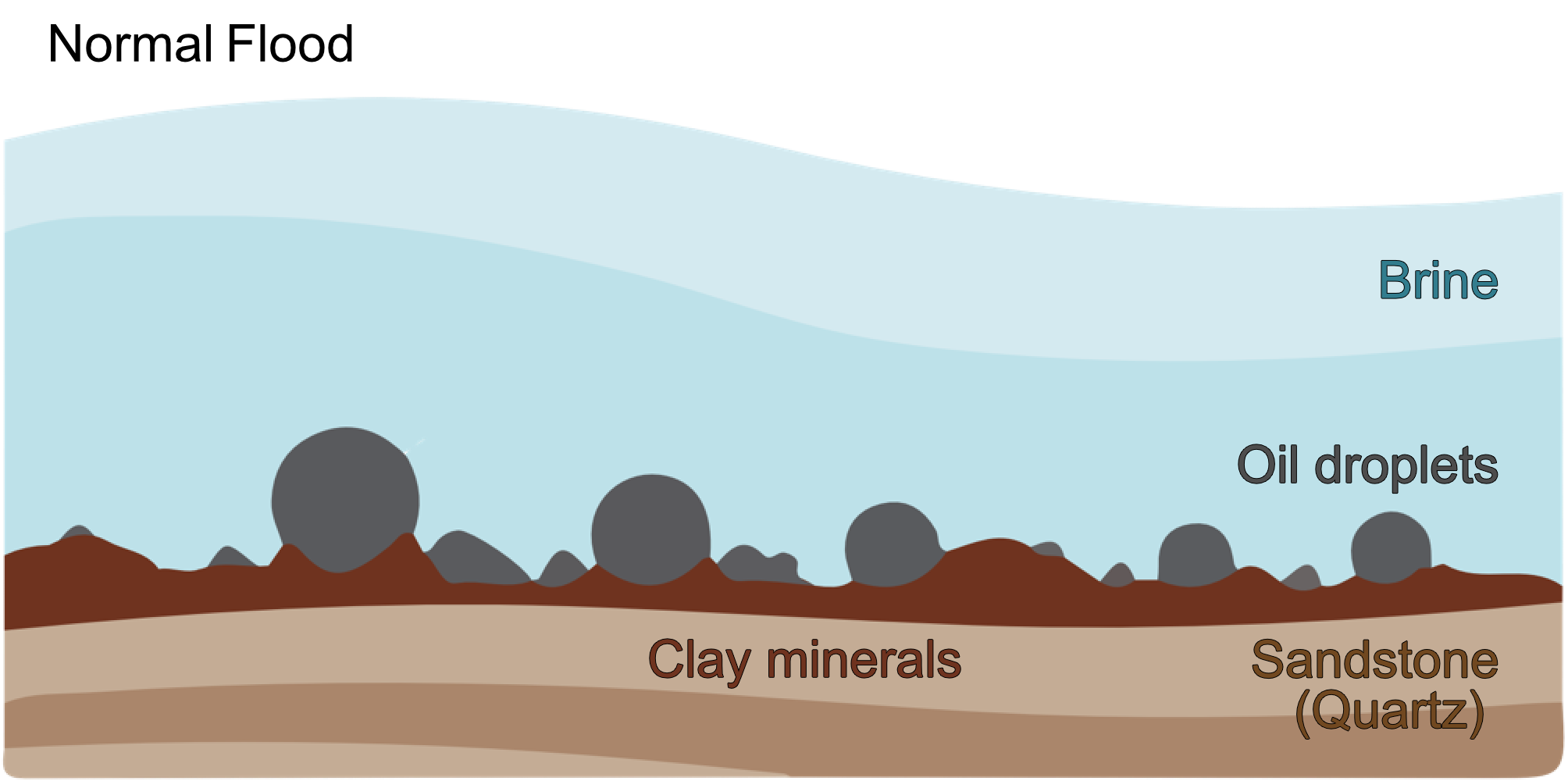
How we think it works...

Research Questions
Low-salinity EOR works, but the fundamental mechanisms are not well understood.
Can we use simulations to aid our understanding of low-salinity EOR?
Can our results help increase oil extraction yield?
Basic MD Setup

Basic MD Setup

Basic MD Setup

Basic MD Setup

Technical Details
Minerals:
- Montmorillonite
- Pyrophyllite
- Illite
- Kaolinite
- Quartz
Organics:
- Decane
- Decanoic Acid
- Decanamine
- Napthelene
Salts:
- NaCl
- KCl
- CaCl2
- MgCl2
Concentrations:
- 0 ppt (freshwater)
- 1 ppt (very low-salinity water)
- 5 ppt (low-salinity water)
- 35 ppt (seawater)
The Main Story...
There are several conditions required for low-salinity EOR:
- A low-salinity flood!
- Divalent cations in formation water.
- Polar components in the oil.
- The presence of clay minerals.
Our aim is to analyse these conditions using MD.
Part 1: Let us examine...
- A low-salinity flood!
- Divalent cations in formation water.
- Polar components in the oil.
- The presence of clay minerals.
Montmorillonite and Decane
T. Underwood et al. (2015) J. Phys. Chem. C.
Pyrophyllite and Decane
T. Underwood et al. (in preperation)
Kaolinite and Decane
T. Underwood et al. (2016) J. Phys. Chem. C.
What do the simulations tell us about
the presence of clay minerals?
- Different clays have significantly different properties.
- Clays with large CEC are not a major player in low-sal EOR.
- This agrees with recent experimental results whereby
kaolinite plays a dominant role.R. Kareem et al. (201x) FILL
Part 2: let us examine...
- A low-salinity flood!
- Divalent cations in formation water.
- Polar components in the oil.
- The presence of clay minerals.
Montmorillonite and Decanoic Acid
T. Underwood et al. (2015) J. Phys. Chem. C.
What about the pH?
T. Underwood et al. (2015) J. Phys. Chem. C.
...but wait...
- A low-salinity flood!
- Divalent cations in formation water.
- Polar components in the oil.
- The presence of clay minerals.
What about divalent cations?
T. Underwood et al. (2015) J. Phys. Chem. C.
What's going on?
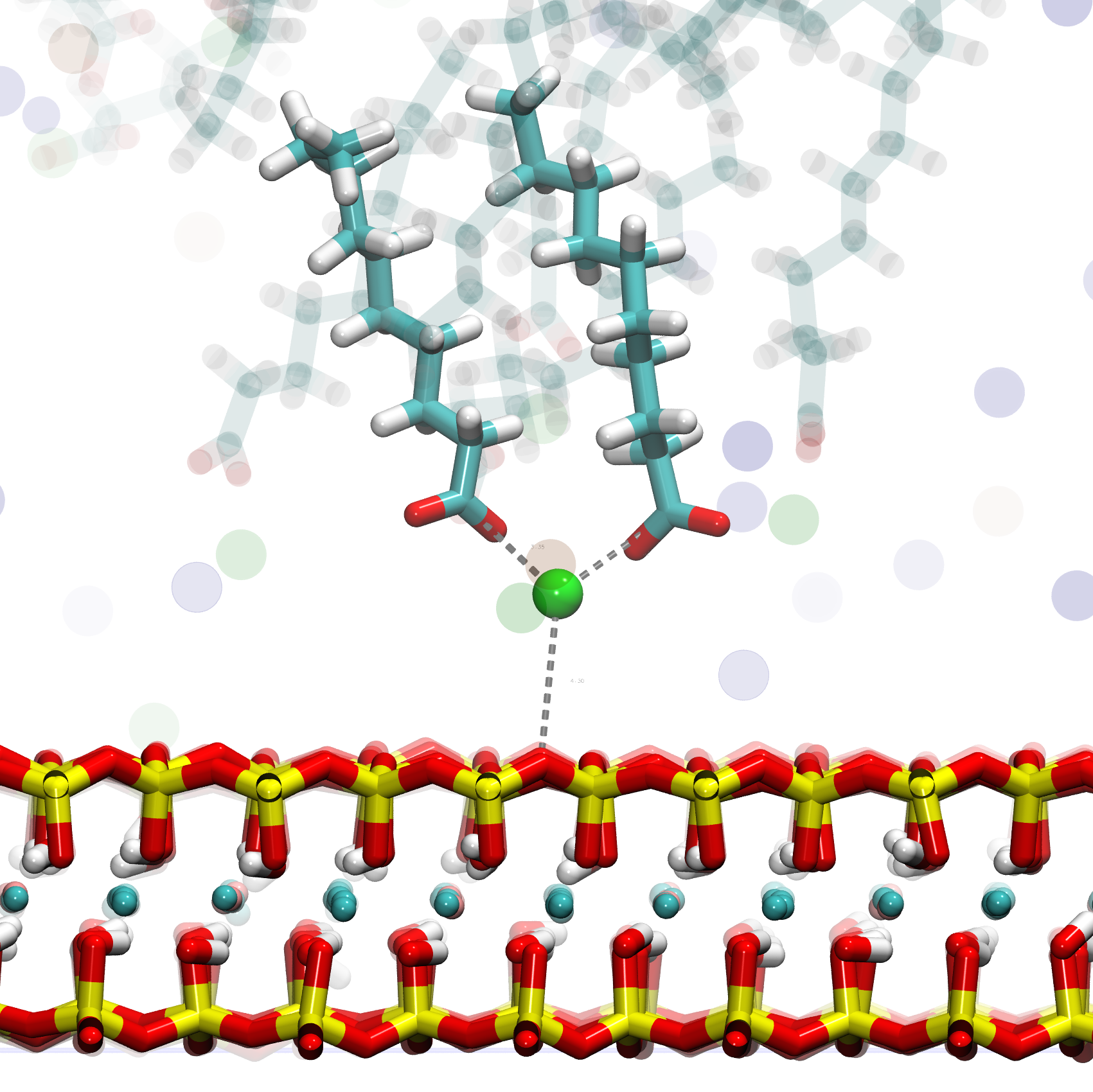
T. Underwood et al. (2015) J. Phys. Chem. C.
What do the simulations tell us about
polar components in the oil?
- We must consider pH to fully understand EOR.
- Cation bridging occurs with divalent ions.
- Ionic content is very important!
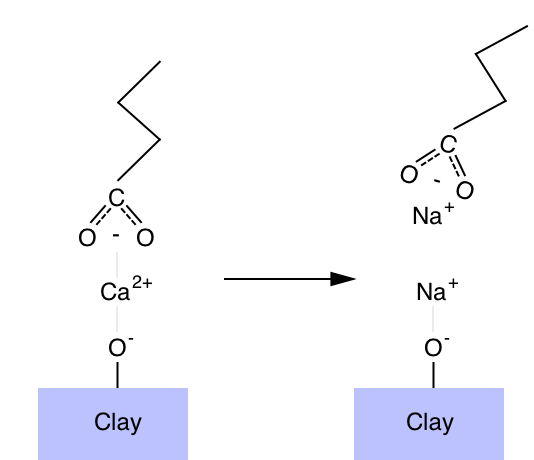
Part 3: let us examine...
- A low-salinity flood!
- Divalent cations in formation water.
- Polar components in the oil.
- The presence of clay minerals.
What about salt concentration?
T. Underwood et al. (2015) J. Phys. Chem. C.
What do the simulations tell us about
about the salt concentration?
There is no correlation between salt concentration and oil-clay interactions at the molecular level.
Is this result suprising?
What else could cause the low-salinity effect?
Take home message...
Ionic content > Ionic concentration
Overall Conclusions
MD simulations offer an ideal opportunity to interpret the phenomenon of low-salinity EOR at the molecular level.
We have been able to successfully describe some of the experimental observations of low-salinity EOR.
The low-salinity aspect remains elusive however.
I would like to thank...
Prof. Chris Greenwell
Dr. Valentina Erastova
Dr. Pablo Cubillas
Rikan Kareem
